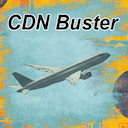Description
Once you use a Content Delivery Network (CDN) such as Amazon Cloudfront to speed up your blog, you will come across instances when you update a static file (a style or image file, for instance), but your readers keep getting the stale file from the CDN. No amount of cache clearing on your blog server is going to help refresh the cached file because it is on the CDN. The only way would be to “invalidate” the file, which will signal the CDN to pull a fresh copy from the origin location. But this necessitates you to log on to the CDN server, locate the file, generate a proper invalidation request, and wait for it to percolate to all the mirrors. And it often costs money.
CDN Buster offers a much easier alternative. You enter a Version String in the plugin admin page, and append the same string where you define the CDN address in your caching plugins, such as WP Super Cache or W3 Total Cache. This way, when your reader loads a page, he is looking for a different file, and your CDN server will query your blog server for it, where this plugin will intercept the query and serve the modified file from the original location. Thus, the modified file will get loaded on your CDN and all will be well.
Pro Version
In addition to the fully functional Lite version, CDN Buster also has a Pro version with many more features.
- Automatically update the CDN settings in your WP Super Cache or W3 Total Cache plugin.
- Change the origin pull location on your CDN server to a generic string (e.g.
cdn-bustor-*where*can be anything) without touching your blog settings to invalidate the cache. - Invalidate by file type, so that only certain types of files are invalidated.
- Invalidate single files from a list that you specify.
Why use a CDN
Content Delivery Network (CDN) is a collection of geographically distributed servers that mirror and serve you static contents (images, JavaScrip/CSS files, movies etc.) to your readers much faster than your own blog server can. It speeds up your blog tremendously:
- It serves a large part of your website payload from servers that are close to the readers. CDN servers are specifically optimized for such contents.
- Since your resources on the CDN have different address (URL), the reader’s browser loads the statc content and the dynamic content (from your blog server) in parallel, enhancing the user experience.
- The load on your blog server goes down becuase it is no longer serving a large part of the page content, which improves its performance.
In short, if you are not using a CDN yet, you should. It is very easy to set it up if you use any popular cacching plugins (such as WP Super Cache or W3 Total Cache). Most CNDs are of the so-called Origin Pull kind, where the CDN server automatically pulls a file from a location (typically your blog itself) whenever it is asked to serve a file it doesn’t have in its cache. This is usually a one-time operation, which is slow. The CDN then proceeds to mirror the file on its servers all over the world. Thereafter, whenever the file is requested, the file is served instantly from a server closest to the reader.

